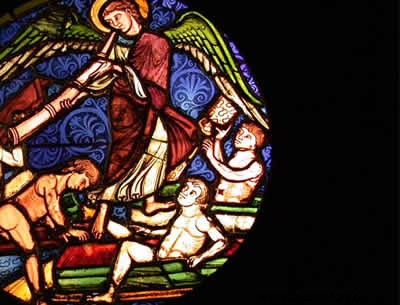
By Rainer Sousa
The use of glass has been around for a long time in human history. Already in antiquity, the Egyptians and Romans used techniques that required the cooking of sand and oxides at a high temperature. Although already known, glass would have a greater importance when the architecture of the Low Middle Ages incorporated it in the manufacture of stained glass. At that time, the great stature of churches required huge glass windows to solve lighting problems.
To create a stained glass window, it was necessary for a painter to sketch the design to be applied on top of the glass. Often with a religious theme, the design was cut out of different pieces of paper, which fit perfectly into the iron frame that would hold the glass pieces. In the meantime, several heating sessions prepared the glass to assume the shapes and colors consistent with the project initially executed.
In addition to glass, stained glass artists performed another delicate task, carrying out the casting and modeling of so-called lead profiles. Once again, each subdivision of the frame should strictly follow the suggested design. After all this preparation, the colored glass pieces were heated until they reached their breaking point. Using a diamond-tipped stylus, the craftsman would cut the glass, fit it into the frame and use a putty that would prevent water from passing through the stained glass window.
After it was ready, the huge window was transported on carts that took it to the church under construction. From a historical perspective, the use of stained glass indicated a period of economic prosperity and the consolidation of a class of skilled workers across Europe. At the same time, we can see that the stained glass designs served as a means of reaffirming the clerical power and disseminating the biblical and hagiographic narratives of the time.
